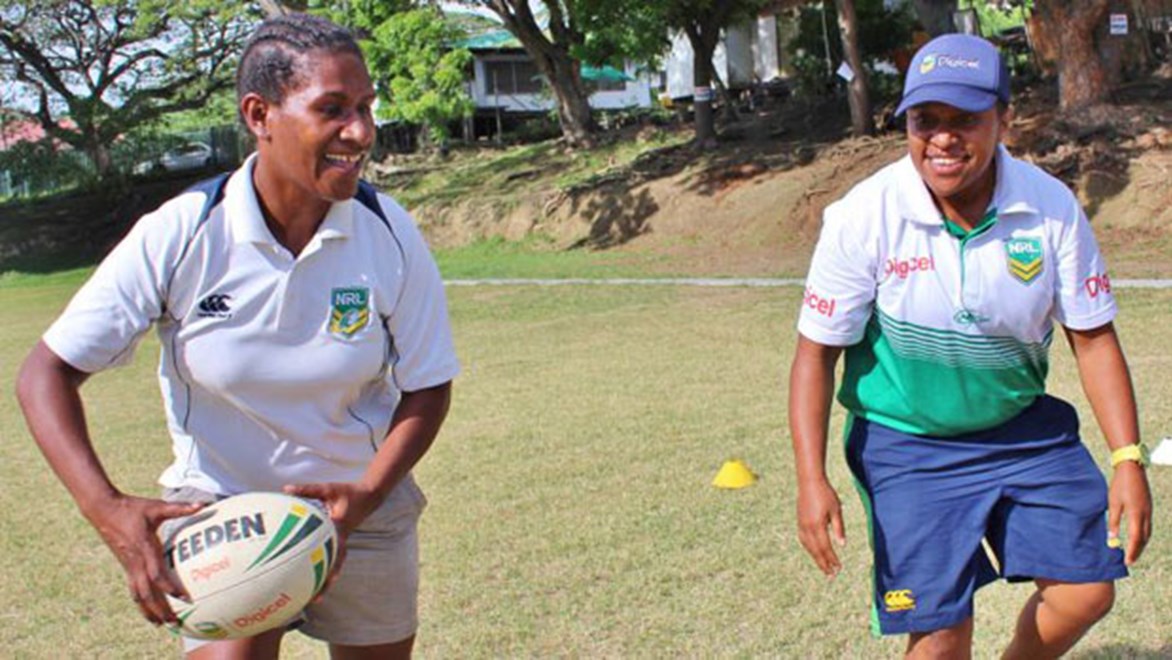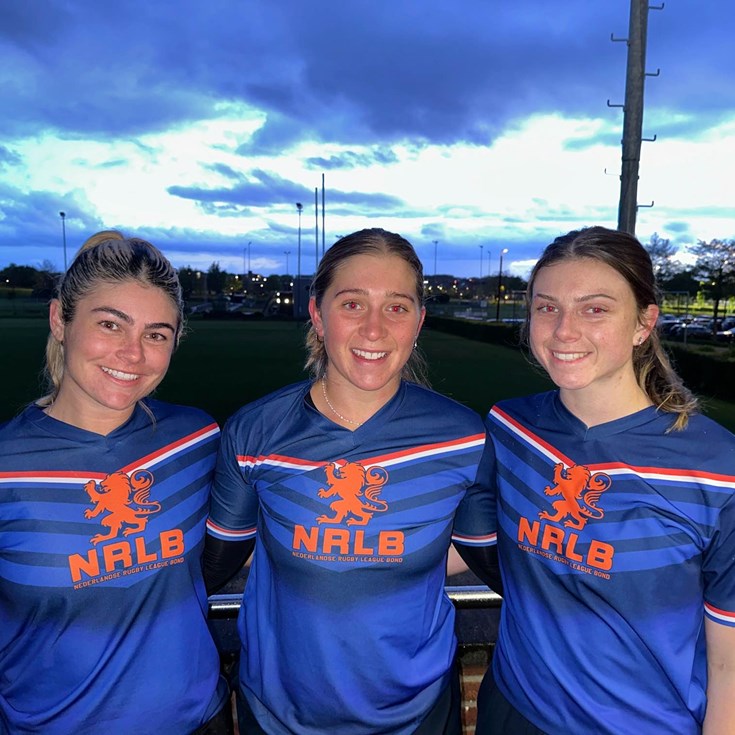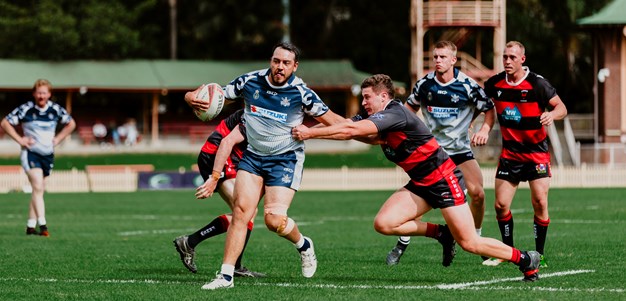

Rugby league - Papua New Guinea's national sport and obsession - is now being used as an educational engagement tool, and a pair of impressive women are taking control of how this traditionally male game is perceived.
Cathy Neap stands up in front of a classroom full of fifth-graders. Unusually, every single one is laser focussed and listening intently to her every word.
"Who is this?" she asks, holding up a sheet of paper with a picture of a footballer on it.
"Luke Burt," the students reply as one, correctly identifying the former Parramatta Eels' goal kicking winger. Some of these students were only five years old when he last played.
Next up, PNG National Rugby League star David Mead. Too easy. It's all one boy can do not to roll his eyes.
Each new page offers another player identification challenge, but the students effortlessly work through the galaxy of stars.
Welcome to week two of the NRL's Wellbeing Program at Tokorara Primary School in PNG. This is indeed a health and nutrition lesson, although you could be excused for thinking it is a rugby league fan club meeting.
"As soon as they see anything to do with rugby, everyone wants to be part of it," says Cathy. The Wellbeing Program Coordinator is happy to boast about this educational sleight of hand.
"As soon as a rugby player walks inside and tells them that 'Ok, it's good to drink water' they will believe [it].
"When it comes from a rugby league player, they are more likely to get it and live up to it and adapt their way of living.
"We use rugby league players in our resources to encourage kids on how it is important to be healthy and fit, and to be in the classroom if you want to be a sportsperson."
Significantly, the rugby league player demanding attention and respect in this classroom is a woman.
Across the other side of town at Gordon International School, teachers have stayed back after class. They are out in the playground, rugby league balls in hand, laughing and spectacularly side-stepping in their sensible schoolteacher attire.
This afternoon, they are being schooled by Rutha-Meu Omenefa. Again, rugby league's face is female.
She is preparing them to become support players in the NRL's League Bilong Laif education program.
It combines game skills development with a learning program that emphasises the value of education and respect for all. The program perfectly complements the lessons these teachers want to deliver across the week.
"It will look like rugby league but as you go through the course, they interact," Rutha says.
"They learn to communicate and that's where respect comes in. They learn to solve problems, make decisions, and for growing children it is really important for them to be more physically active."
PNG remains a male-dominated society and holds little else as sacred as the game of rugby league. The fact women have been empowered with the future of PNG's young fans, and thus the game itself, is powerfully symbolic.
Rutha and Cathy both play, and have risen quickly through the professional ranks of the NRL with commitment and talent. The pair embody attitudinal change.
"I believe in teaching children at a younger age so as they grow they develop the skills, and themselves as good people," Rutha says.
"Out of respect a lot of other messages come with it."
"New ways of teaching the same old ideas [are] much more interesting and much more fun, and in this program we change people's lives and we change a person's character," Cathy says.
"It is a real thing that we can achieve and say that we have done something good in our community and our country."
It may be a while before every member of the class can recognise dozens of women rugby league players at a glance in PNG, or anywhere else.
But the young people who have had Cathy and Rutha enter their lives will forever remember the female faces that shared their love of the national game and taught them much about league and life.
This story was produced by ABC International Development as part of the Pacific Sports Partnerships funded by the Australian Department of Foreign Affairs and Trade, and first appeared here.


